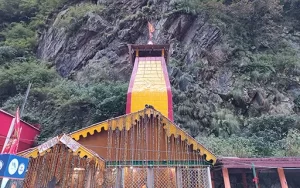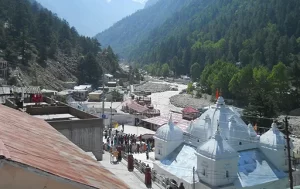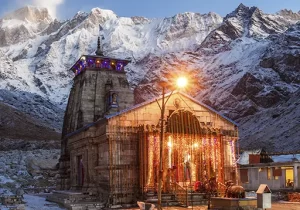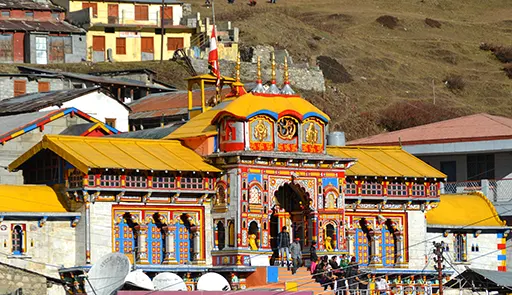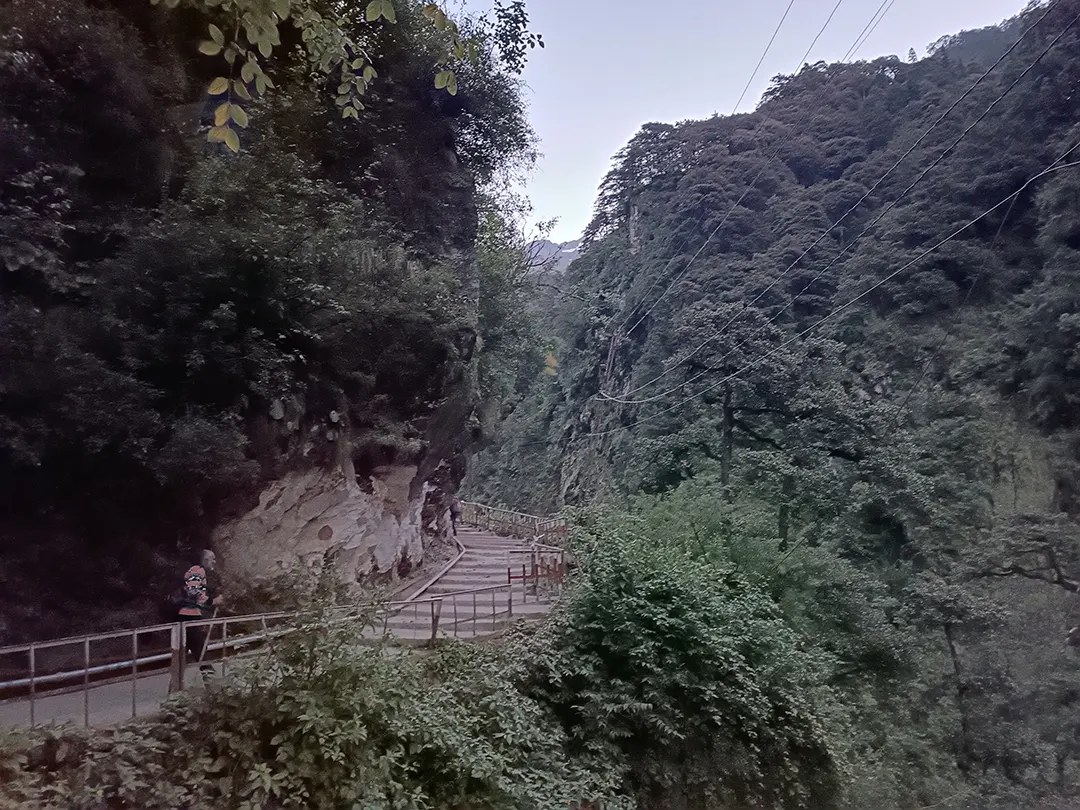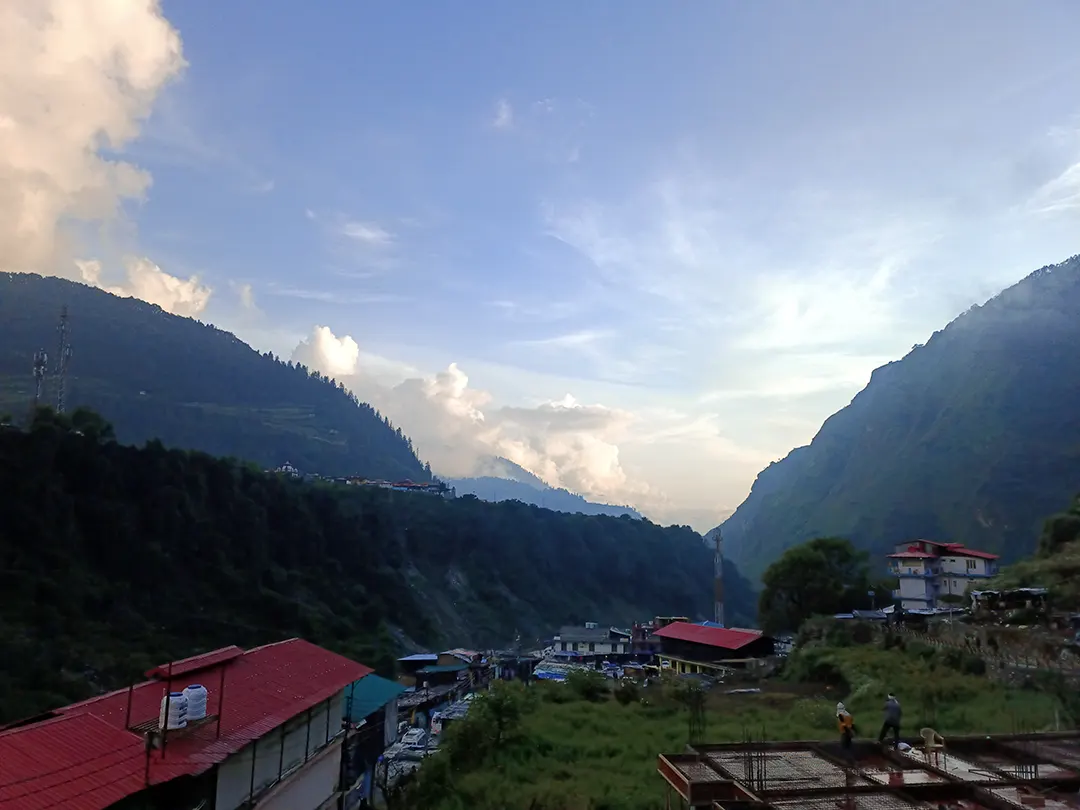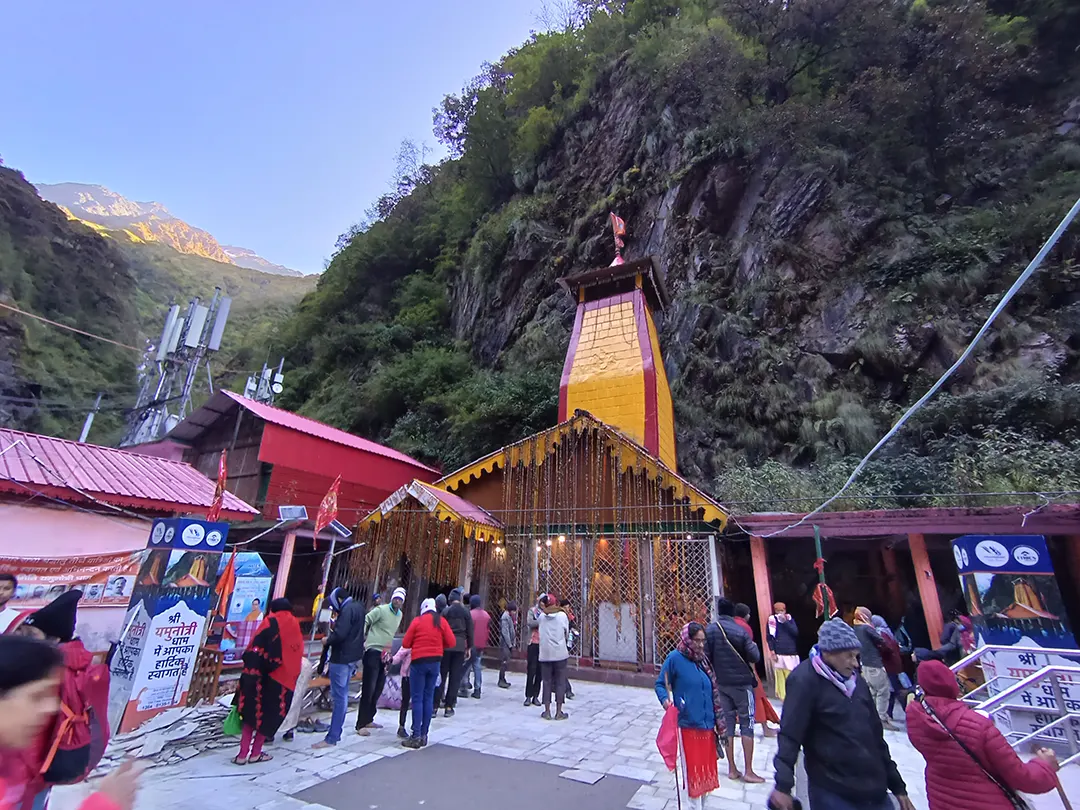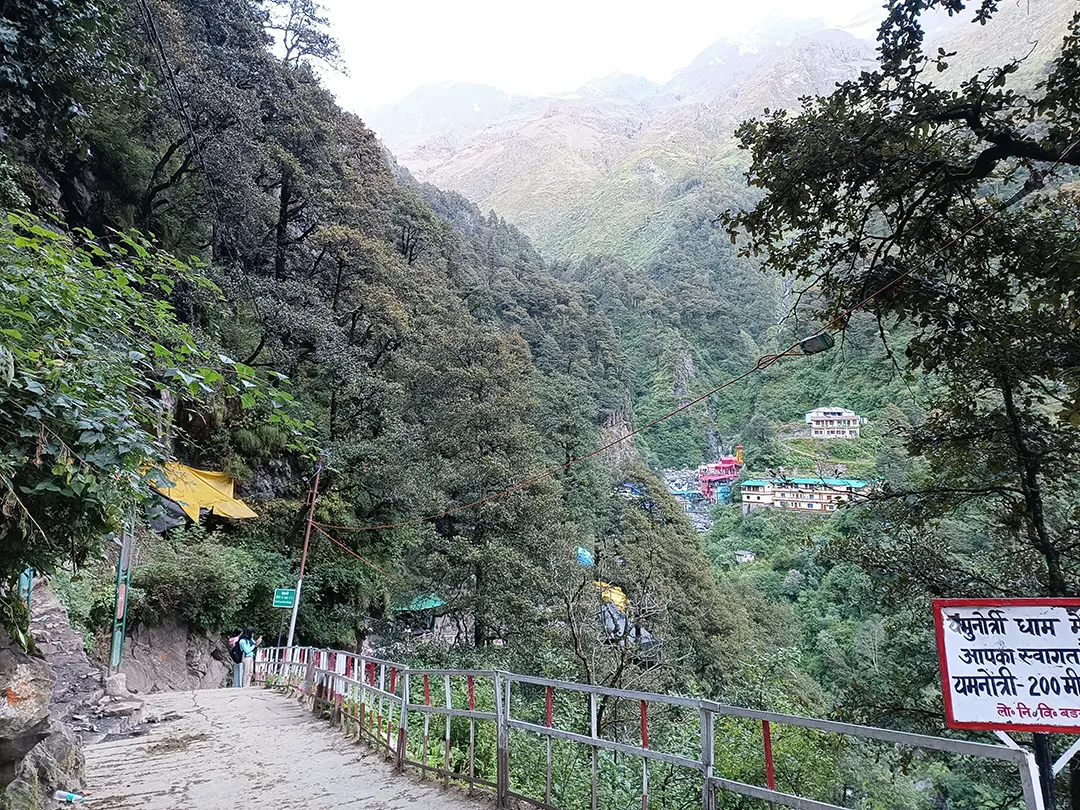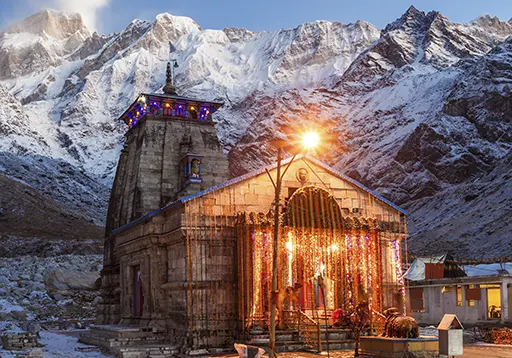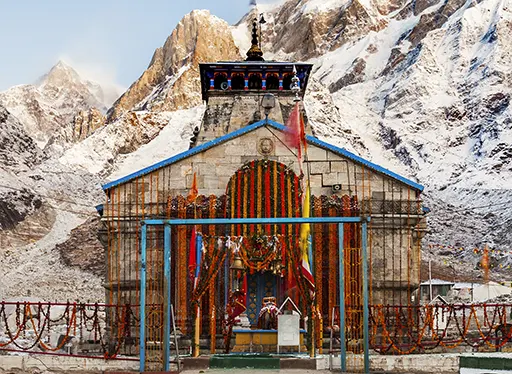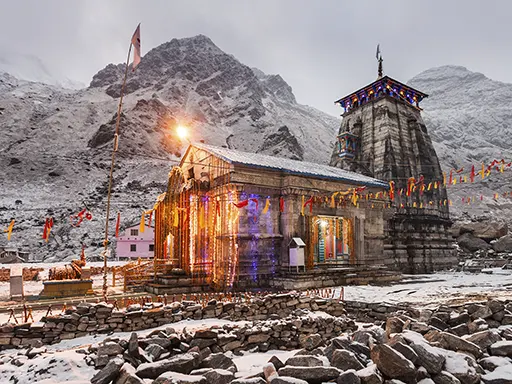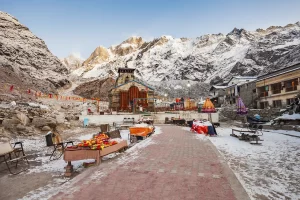To register for the Chardham Yatra through the Uttarakhand government’s...
Read MoreChardham Yatra
Uttarakhand
May to October
Pilgrimage
10 May 2024
About Chardham Yatra
Do you know: “that the original route of the Chardham Yatra spans 1200 kilometers, tracing back over 3000 years to the time of the Pandavas? This ancient pilgrimage circuit, from Rishikesh to Rishikesh, holds deep historical and spiritual significance in Hindu mythology.”
Chardham Yatra 2024 is a special trip for people who want to visit holy places in the Himalayas. This journey takes you to four important places: Yamunotri, Gangotri, Kedarnath, and Badrinath. These places are very sacred for Hindus.
Yamunotri is where the Yamuna River starts. People come here to see the beautiful nature and take baths in hot springs, which are believed to have special healing powers. Gangotri is where the Ganges River begins. It’s a beautiful place where people pray and feel the presence of God.
Kedarnath is another important place. It has a temple dedicated to Lord Shiva. Many people visit this temple seeking peace and blessings. Finally, there’s Badrinath, a place dedicated to Lord Vishnu. It’s surrounded by snowy mountains and offers a peaceful environment for prayers and reflection.
In 2024, this journey is even more important because it gives people hope and strength after difficult times. Despite challenges, many people are coming together to go on this spiritual journey, believing it will bring them closer to God and give them peace of mind.
Highlights of Chardham Yatra
Spiritual Journey: Chardham Yatra is a sacred pilgrimage journey that takes devotees to four revered Hindu sites in the Himalayas, offering an opportunity for spiritual rejuvenation and divine blessings.
Scenic Beauty: The yatra traverses through picturesque landscapes, with snow-capped peaks, lush valleys, gushing rivers, and serene forests, providing a breathtaking backdrop for spiritual contemplation.
Yamunotri: At the source of the Yamuna River, pilgrims visit the Yamunotri temple and take a dip in the hot water springs, believed to have medicinal properties, amidst the tranquil surroundings of the Garhwal Himalayas.
Gangotri: Devotees offer prayers at the Gangotri temple, where the Ganges River originates from the Gangotri Glacier, surrounded by majestic peaks and pristine beauty, symbolizing purity and divinity.
Kedarnath: Nestled amidst the dramatic peaks of the Garhwal Himalayas, Kedarnath is home to the ancient Kedarnath Temple dedicated to Lord Shiva, attracting devotees seeking blessings and spiritual solace in the serene ambiance.
Badrinath: The journey culminates at Badrinath, the abode of Lord Vishnu, where devotees visit the Badrinath Temple nestled amidst the snow-clad peaks, experiencing a sense of divine presence and tranquility.
Cultural Experience: Along the way, pilgrims encounter rich cultural traditions, local cuisines, and hospitality, enhancing the spiritual journey with authentic cultural experiences.
Chardham Yatra Mandir Timings
Yamunotri Temple:
- Opens for darshanarthi at 6:00 AM and closes at 8:00 PM.
- There’s a brief closure from 12:00 PM to 2:00 PM in the afternoon.
- Mangal Aarti takes place in the morning from 6:30 AM to 7:30 AM.
- Shayan Aarti is performed in the evening from 6:30 PM to 7:30 PM.
Gangotri Temple:
- Opens its doors from 6:30 AM to 9:30 PM.
- There’s a short break for bhog from 9:00 AM to 9:10 AM.
- In the afternoon, the temple closes for Shayan between 2:00 PM and 3:00 PM.
- Evening aarti takes place from 6:30 PM to 7:45 PM.
- The darshan time varies with the season – from May to June, it’s four hours, and from July to October, it’s one hour.
Kedarnath Temple:
- The daily ritual begins at 4:00 AM with Maha Abhishek.
- Various pooja ceremonies are conducted throughout the day.
- The temple is open for dharshanarthi from 6:00 AM and closes at 7:00 PM in the evening.
- The day concludes at 7:00 PM with Shayan aarti.
- There’s a break in the afternoon from 1:00 PM to 4:00 PM when the temple is closed for dharshanarthi.
Badrinath Temple:
- Worship and Abhishek for Lord Badrinath begin at 4:30 AM.
- Darshanarthi can come from 7:00 AM when the temple premises open.
- The temple closes between 8:30 PM and 9:00 PM after the Shayan Aarti.
- Just like Kedarnath Temple, there’s a break in the afternoon from 1:00 PM to 4:00 PM when the temple is closed for darshanarthi.
Chardham Yatra Location
The Chardham Yatra encompasses four significant pilgrimage sites nestled amidst the majestic Himalayas in the state of Uttarakhand, India. Each location holds profound religious significance and attracts millions of devotees seeking spiritual solace and divine blessings. Let’s explore these sacred destinations:
Yamunotri: Located in the Uttarkashi district, Yamunotri marks the origin of the sacred Yamuna River. Situated at an elevation of 3,293 meters (10,804 feet), Yamunotri is surrounded by snow-capped peaks and lush greenery. Pilgrims embark on a 6-kilometer trek from the town of Hanuman Chatti to reach the Yamunotri temple, where they offer prayers and take holy dips in the natural thermal springs believed to have medicinal properties.
Gangotri: Situated in the Uttarkashi district, Gangotri is the source of the holy Ganges River. The town of Gangotri is nestled amidst the Garhwal Himalayas, offering panoramic views of snow-clad peaks. Pilgrims visit the Gangotri temple, located at an altitude of 3,100 meters (10,200 feet), to pay homage to Goddess Ganga and seek blessings. The temple is accessible via a trek or road journey from the town.
Kedarnath: Perched at an altitude of 3,583 meters (11,755 feet) in the Rudraprayag district, Kedarnath is dedicated to Lord Shiva. The Kedarnath Temple, one of the twelve Jyotirlingas, is situated amidst breathtaking Himalayan landscapes. Devotees undertake a challenging trek of approximately 16 kilometers from Gaurikund to reach the temple or opt for helicopter services. The serene ambiance and spiritual aura of Kedarnath attract pilgrims from far and wide.
Badrinath: Located in the Chamoli district, Badrinath is dedicated to Lord Vishnu. Perched at an altitude of 3,133 meters (10,279 feet), Badrinath is surrounded by lofty peaks and lush valleys. The Badrinath Temple, a revered pilgrimage site, is believed to have been established by Adi Shankaracharya. Pilgrims visit the temple to seek blessings and witness the divine idol of Lord Badrinarayan. The town also offers natural hot springs known for their therapeutic properties.
These sacred locations of the Chardham Yatra not only provide spiritual fulfillment but also offer stunning vistas, tranquil surroundings, and a glimpse into the rich cultural heritage of Uttarakhand.
Chardham Yatra Packages
Everything About Chardham Yatra
How to Reach Haridwar
To reach Haridwar, you can use both train and bus services. Here’s how to reach Haridwar via these modes of transportation:
By Train: Haridwar is well-connected by rail to various cities across India. You can check the train schedules and book tickets through the official website of the Indian Railways, also known as the IRCTC (Indian Railway Catering and Tourism Corporation). Here is the link to the IRCTC website: IRCTC Official Website.
By Bus: Haridwar is also accessible by road, with regular bus services operating from nearby cities and towns. You can check the bus schedules and book tickets through the official website of the Uttarakhand Roadways Corporation (UTC). Here is the link to the UTC website: Uttarakhand Roadways Corporation.
By using these government websites, you can easily plan your journey to Haridwar and book tickets in advance, ensuring a smooth and hassle-free travel experience.
Fitness and Preparation for Chardham Yatra
- Don’t forget to train yourself physically: Regular exercise is crucial for tackling the challenging terrain and altitude of the trek. Try incorporating at least 30 minutes of cardio and strength training for 3-4 weeks before your trek, to build endurance and muscle strength.
- Focus on strength-building exercises: Incorporate exercises that mimic the trek’s demands, such as uphill walking, lunges, squats, and core strengthening.
- Gradually increase your workout intensity: Initially start with moderate workouts and you may gradually increase the duration and difficulty of your workouts, as your fitness and strength improve.
- Listen to your body: Most importantly, be mindful of your body’s limitations and take rest days when needed.
Acclimatization for Chardham Yatra
What is Acclimatization?
Acclimatization is your body’s way of adjusting to the external environment, be it cold or hot, high altitude, or any other conditions.
Typically, we use this term in the context of mountains, where cold temperatures prevail. To acclimate effectively to these temperatures, it’s essential to stay vigilant. While covering your head is recommended, avoid covering your ears to facilitate the adaptation process.
While you can’t wait to ascend the breathtaking heights of Dayara Bugyal, it is an essentially high-altitude trek so it is crucial to remember that you’re venturing into a realm of reduced oxygen levels. This makes acclimatization important. Acclimatization is a vital process that allows your body to adapt and thrive in this new environment.
Why do you need to acclimatize for Chardham Yatra?
Dayara Bugyal has an average altitude of 11939 ft. At such high altitudes, the air contains less oxygen than what it does at sea level. Our body needs a certain amount of time to adjust to this change. It does so by increasing the red blood cell count in our body and hence improving its efficiency in utilizing the absorbed oxygen. This process, which is known as acclimatization, can take anywhere between a day to sometimes several days to complete depending on the elevation of the place.
Ignoring acclimatization can lead to altitude sickness (AMS), a condition that can manifest with symptoms like headache, nausea, dizziness, and difficulty in sleeping. In severe cases, AMS can even be life-threatening.
How to acclimatize for Chardham Yatra?
- Start early: Morning walk allows your body to start adapting.
- Gradual ascent: The best way to start acclimatization is to gradually increase your elevation. Instead of rapidly climbing to Dayara Bugyal’s altitude, plan your trek to include gradual increases in elevation. This shall allow your body to adjust effectively and reduce the risk of AMS.
- Hydrated adequately: We cannot stress enough on how important this is. Drinking plenty of water helps your body function optimally and aids in the acclimatization process. Try to drink at least 3 liters of water per day when acclimatizing.
- Listen to your body: Most importantly, don’t push your body too hard. If you experience any symptoms of AMS, descend immediately and seek medical attention.
- Consider medication: Diamox is a medication that can help prevent AMS. Before you begin the journey, consult your doctor to see if it’s right for you.
Respecting the Environment and Culture
We at RoamingIndian believe in responsible tourism and as a means to prepare our travellers. Here are a few things we expect you to be mindful of during your journey.
- Pack out all waste: Carry all your trash back with you for proper disposal and leave no trace behind. This will ensure that the next batch of trekkers experience the beauty of the place in its true pristine state.
- Respect the Wildlife: It is requested to observe any animals from a safe distance and avoid disturbing them or their natural habitat. Do not feed or approach wild animals.
- Be mindful of noise: Avoid loud music or boisterous behavior, especially in villages and near sacred sites.
- Protect the Flora: Respect the forest and avoid picking out wildflowers or damaging trails in any way. This is to let the meadows bloom naturally for others to enjoy.
- Respect the local culture: Dress modestly when visiting local villages, and dress in a way that is respectful of their culture and traditions.
Important Links
For information and resources on the Chardham Yatra, as well as official government websites for permits and regulations, you can refer to the following:
Government Websites:
Essentials Items to Pack for Chardham Yatra
Pack lightweight, breathable clothes for the daytime and warmer layers for cooler evenings. Include:
- Comfortable trekking pants or leggings
- T-shirts or tops
- Warm jacket or fleece
- Waterproof jacket or poncho
- Hat or cap for sun protection
- Scarf or shawl for temple visits
Choose sturdy, comfortable footwear suitable for trekking and walking long distances:
- Trekking shoes or sturdy walking sandals
- Extra pair of comfortable shoes for leisure times
- Sunglasses with UV protection
- Sunscreen lotion
- Lip balm with SPF
- Insect repellent
- Personal hygiene items
- Wet wipes and hand sanitizer
- Basic first aid kit with band-aids, antiseptic cream, pain relievers, and any personal medications
- Prescription medicines for common ailments like altitude sickness, indigestion, or headaches
- Water purification tablets or portable water filter
- Rehydration salts or electrolyte powder
- Valid identification (passport, Aadhar card, or driver’s license)
- Travel permits or passes required for specific areas
- Emergency contact information
- Energy bars, nuts, and dried fruits for quick energy
- Bottled water or water bladder for staying hydrated during treks
- Lightweight backpack or daypack
- Flashlight or headlamp with extra batteries
- Power bank for charging electronic devices
- Waterproof pouch or bag for storing valuables and documents
- Travel umbrella or rain poncho
Best Time for Chardham Yatra
The best time to visit the Chardham Yatra is during the summer and early autumn months, typically from late April to early November. The ideal months for the pilgrimage are:
Late April to June: This period marks the beginning of the Chardham Yatra season when the weather is pleasant, and the snow has melted, making the pilgrimage sites accessible. Days are warm, and nights are cool, offering comfortable conditions for travel and temple visits.
September to October: After the monsoon season, the weather becomes clear, and the landscapes are lush green and picturesque. This time is ideal for those seeking quieter and less crowded pilgrimage experiences. The weather is still pleasant, with mild temperatures and minimal rainfall.
It’s important to note that the Chardham Yatra sites are located in high-altitude regions of the Himalayas, and the weather can be unpredictable. Hence, it’s advisable to avoid the monsoon season (July to August) due to heavy rainfall, landslides, and potential roadblocks, which can disrupt travel plans and pose safety risks.
Chardham Yatra Temperature
The temperature during the Chardham Yatra varies depending on the time of year and the altitude of the pilgrimage sites. Here’s a general overview of the temperature range you can expect at each of the Chardham destinations:
Yamunotri: Located at an altitude of around 3,293 meters, Yamunotri experiences cool to cold temperatures throughout the yatra season. During the summer months (May to June), temperatures range from 6°C to 20°C during the day, dropping to around 0°C to 10°C at night. In the early and late yatra season (April and October/November), temperatures can be colder, with daytime temperatures ranging from 0°C to 15°C and nighttime temperatures often dropping below freezing.
Gangotri: Situated at an altitude of approximately 3,100 meters, Gangotri experiences similar temperature patterns to Yamunotri. During the summer months, daytime temperatures range from 10°C to 25°C, while nighttime temperatures range from 5°C to 15°C. In the early and late yatra season, temperatures can drop significantly, with daytime temperatures ranging from 5°C to 20°C and nighttime temperatures often falling below freezing.
Kedarnath: Kedarnath, located at an altitude of around 3,583 meters, has cooler temperatures compared to Yamunotri and Gangotri due to its higher elevation. During the summer months, daytime temperatures range from 5°C to 20°C, with nighttime temperatures dropping to 0°C to 10°C. In the early and late yatra season, temperatures can be colder, with daytime temperatures ranging from 0°C to 15°C and nighttime temperatures often dipping below freezing.
Badrinath: Badrinath, situated at an altitude of approximately 3,300 meters, experiences cool to mild temperatures during the yatra season. Daytime temperatures range from 10°C to 25°C during the summer months, while nighttime temperatures range from 5°C to 15°C. In the early and late yatra season, daytime temperatures range from 5°C to 20°C, and nighttime temperatures often drop below freezing.
It’s important to note that these temperature ranges are approximate and can vary based on weather conditions and other factors. Additionally, temperatures at higher altitudes can feel cooler due to factors such as wind chill and altitude sickness. Visitors should be prepared for a range of temperatures and dress accordingly to stay comfortable during the Chardham Yatra.
Frequently Asked Questions
The Chardham Yatra is a sacred pilgrimage to four prominent Hindu temples in the Uttarakhand region of India, namely Yamunotri, Gangotri, Kedarnath, and Badrinath.
The best time to visit the Chardham Yatra is typically from late April to early November, avoiding the monsoon season (July to August) due to heavy rainfall and landslides.
The traditional route for the Chardham Yatra starts from Haridwar and proceeds to Yamunotri, Gangotri, Kedarnath, and finally, Badrinath before returning.
The duration of the Chardham Yatra depends on various factors such as the mode of transportation, pilgrimage sites visited, and individual preferences. Typically, it can take around 10 to 15 days to complete the entire circuit.
Pilgrims can undertake the journey by road, either using private vehicles, shared taxis, or state-run buses. Additionally, helicopter services are available for those seeking a quicker and more comfortable travel option.
Yes, there are various accommodation options available along the Chardham Yatra route, including hotels, guesthouses, dharamshalas, and tented camps, catering to different budgets and preferences.
While the Chardham Yatra involves trekking and walking long distances, there are options available such as pony rides, palanquins (dolis), and helicopter services to accommodate elderly or differently-abled individuals. However, it’s essential to consult with healthcare professionals before undertaking the journey.
Pilgrims should stay informed about weather conditions, carry necessary medications, follow instructions from local authorities, and avoid trekking alone in remote areas. It’s also advisable to carry a fully charged mobile phone and inform family or friends about the travel itinerary.
Related Blogs

